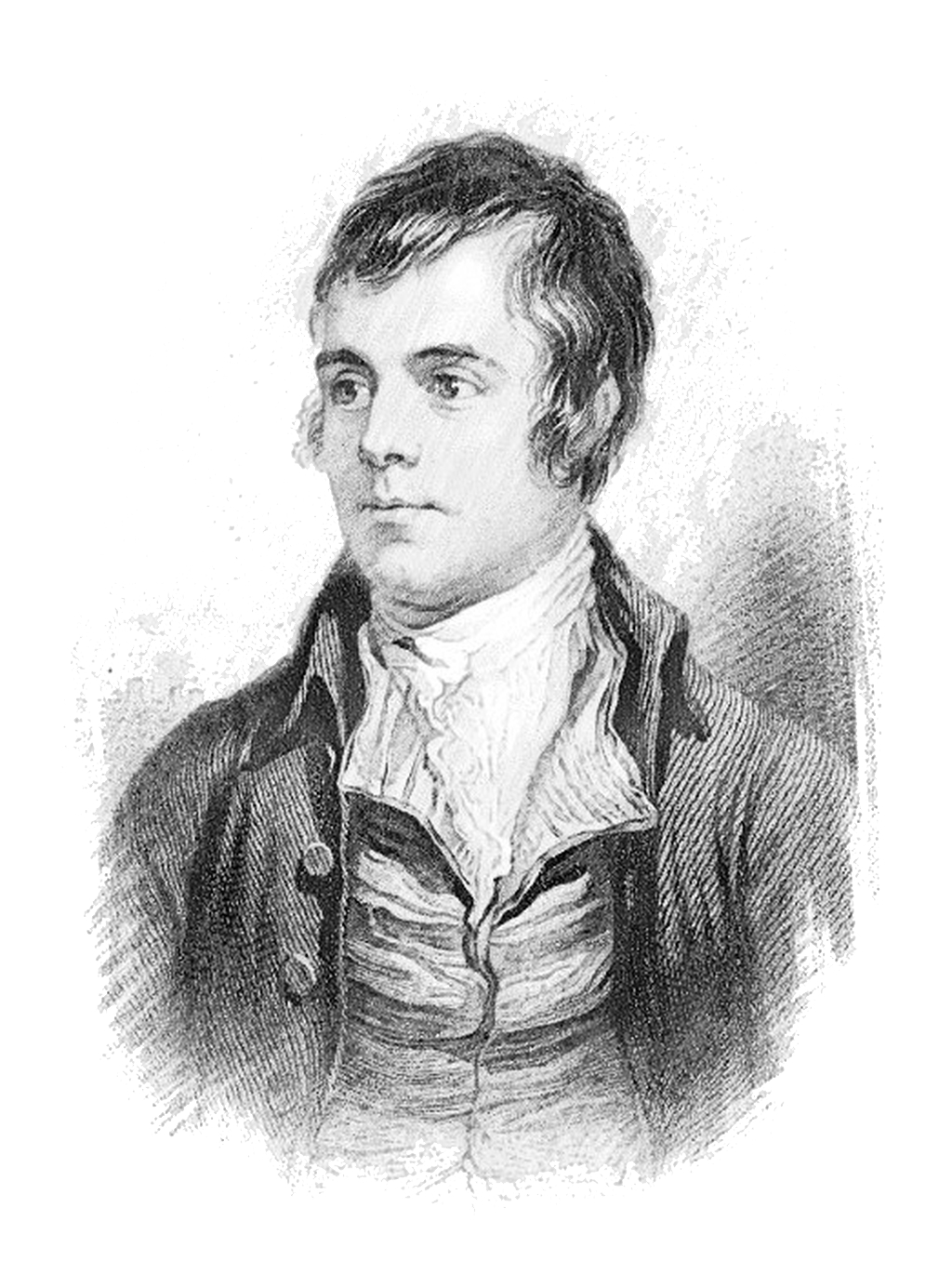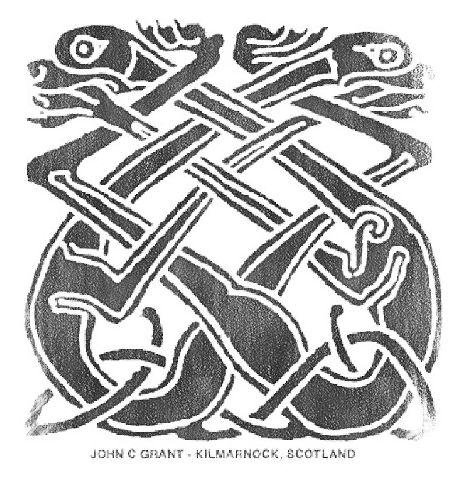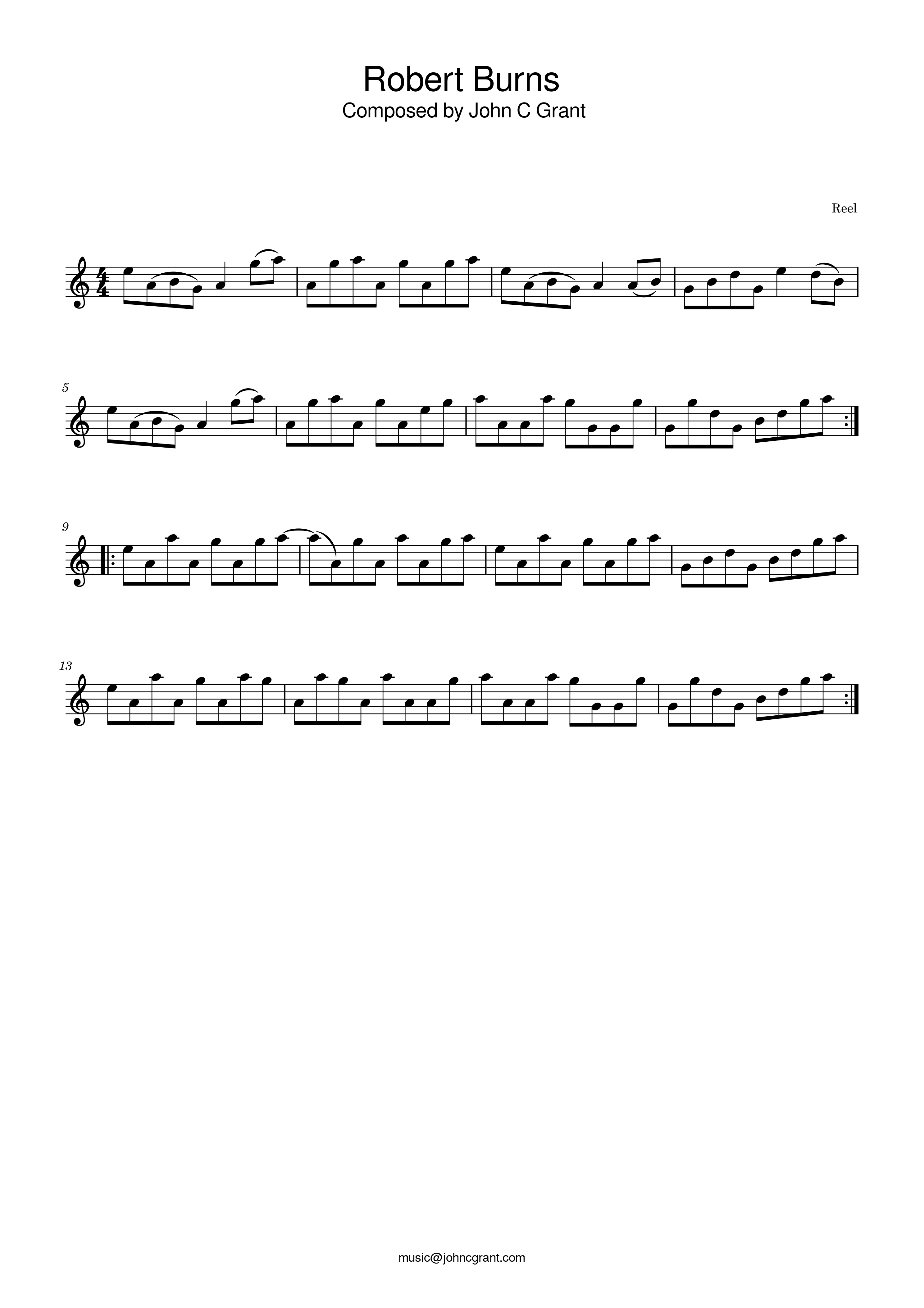
How do you go about composing music on the subject of Robert Burns? In truth, I’ve approached this in the same way as all other compositions - I’ve studied the subject and tried to distil facets of personality, vitality, and essence into 32 bars. Some subjects are significantly easier than others. There are so many Robert Burns’ for the world - the poet, the fiddler, the womaniser, the farmer, the sanitised re-branded Burns for the establishment, the rock star of his generation. For this composition, I have taken Robert Burns the young Ayrshire man attending the Bachelors’ Club in Tarbolton, Ayrshire - full of the energy and optimism of youth - eager to debate and gain new insights into the world, a drinking partner to his brother Gilbert and friends Hugh Reid, Alexander Brown, Thomas Wright, William M’Gavin, Walter Mitchell and David “Dainty Davie” Sillar. This is the young man who was enchanted by the accomplished fiddler and dance master William Gregg, the young Robert who held the now famous Gregg Fiddle in his hands and dreamed.
We still feel the positive effects of Robert Burns some 200 plus years later, and his writing remains ever relevant. He can still be felt within the room of the annual Bachelors’ Club Burns Supper, and the glow of William Gregg can still warm the small upstairs room through the sublime talents of the resident Burns Supper musicians of Wallace Galbraith, David Moore, Bruce Kennedy, Maureen McCroskie, and others. Throughout Ayrshire, his influence still burns strong through talents such as the music of Roscoe Vacant, Kevin Longmuir, and Ewin Murray, the words of Rab Wilson, Billy Kay, and Jim Gemmell, and the art of Eòghann Mac Colla and Johnathon Pickering.
Ladies and Gentlemen, if you’ll have it - I present to you Robert Burns - the dreamer from Tarbolton, Ayrshire.
Robert Burns (25 January 1759 – 21 July 1796), affectionately known as Rabbie Burns, stands as an eminent figure in Scottish literature and a luminary of lyrical expression. His legacy resonates worldwide, for he is acclaimed as Scotland’s national poet. Renowned for his adeptness in the Scots language, his literary prowess transcends borders, with his works embracing a “light Scots dialect” that renders them accessible beyond the confines of Scotland. However, he also seamlessly wove his thoughts into the fabric of standard English, often employing it as a canvas for his unapologetic political and civil commentary.
Situated at the vanguard of the Romantic movement, Burns’ influence posthumously extended to shaping the ideals of liberalism and socialism. A cultural icon not only within Scotland but also within the global Scottish diaspora, Burns’ life and works took on the status of a charismatic national cult throughout the 19th and 20th centuries. His impact on Scottish literature is indelible, solidifying his position as an irreplaceable literary giant. In 2009, his significance was underlined when he was hailed as the greatest Scot by the Scottish public in a poll organised by STV, a Scottish television channel.
Beyond his original compositions, Burns’ legacy also encompasses his tireless efforts to collect and preserve traditional folk songs from across Scotland. Many of these songs were re imagined, revised, or adapted to his unique vision. His immortal creation “Auld Lang Syne” remains a steadfast companion to Hogmanay, marking the close of each year. “Scots Wha Hae,” bearing the essence of a potent call to arms, resonated as a de facto national anthem. Moreover, his masterpieces such as “A Red, Red Rose,” “A Man’s a Man for A’ That,” “To a Louse,” “To a Mouse,” “The Battle of Sherramuir,” “Tam o’ Shanter,” and “Ae Fond Kiss” continue to echo across the world.
Born two miles south of Ayr in the hamlet of Alloway, Burns emerged as the eldest among seven siblings to William Burnes (1721–1784), a self-educated tenant farmer hailing from Dunnottar, and Agnes Broun (1732–1820), daughter of a Kirkoswald tenant farmer. The poet’s early life unfolded in the abode built by his father—a house that today is enshrined as the Burns Cottage Museum. Here, he resided until the tender age of seven, when circumstances prompted his family to migrate to the Mount Oliphant farm, encompassing 70 acres, southeast of Alloway. The grind of farm labour and the weight of poverty left an indelible mark on Burns, manifesting in a constitution weakened by rigorous toil. On the road to education, his path was uneven. While sporadic formal schooling was interspersed, much of his erudition was nurtured by his father, who imparted lessons in reading, writing, arithmetic, geography, history, and even authored a “Manual of Christian Belief” for his children. Further enlightenment was provided by the tutelage of John Murdoch, a young teacher, who taught Latin, French, and mathematics to Robert and his brother Gilbert. This “adventure school,” initiated in Alloway in 1763, became an incubator for their intellectual growth until 1768.
At the tender age of 15, Burns shouldered the mantle of principal labourer at Mount Oliphant, presiding over the fields during the 1774 harvest with the assistance of Nelly Kilpatrick, who ignited his poetic endeavours with “O, Once I Lov’d A Bonnie Lass.” Following this, he embarked on a sojourn to Kirkoswald in 1775 to conclude his formal education under a tutor’s guidance. It was here that he encountered Peggy Thompson, inspiring the verses “Now Westlin’ Winds” and “I Dream’d I Lay.”
Despite his intrinsic abilities and commendable character, father William Burnes was plagued by a relentless string of misfortune. With a burgeoning family in tow, he embarked on a series of migrations from one farm to another, caught in the inexorable grip of circumstances that refused to yield improvement. In the spring of 1777, a pivotal moment emerged as he led his family away from the inhospitable environs of Mount Oliphant. Their trajectory led them to the welcoming embrace of Lochlea, a 130-acre expanse near Tarbolton. Here, amidst rolling fields and open skies, they established their residence until fate dealt a poignant blow with William Burnes’ passing in 1784. This poignant chapter etched them into the fabric of Tarbolton’s community, their lives intertwining with the pulse of the locale.
In defiance of his father’s reservations, young Robert ignited his own spark in 1779 by enrolling in a country dancing school. Akin to a whirlwind of vitality, he and his brother Gilbert formed the Tarbolton Bachelors’ Club in the subsequent year. Within this dynamic backdrop, the earliest surviving fragments of his correspondence emerged, resonating with fervent romantic intentions directed towards Alison Begbie (b. 1762). Despite the heartfelt melodies he penned and his willingness to forge a matrimonial bond, her heart remained elusive, veering away from his advances.
The passage of time saw Robert Burns ushered into the Masonic lodge St David in Tarbolton on the 4th of July in 1781. A temporary shift to Irvine ensued, where the pursuit of knowledge led him to the trade of flax-dressing. Yet, the embers of fate raged into a blaze during the New Year’s jubilations of 1781/1782. The flames consumed the flax shop, extinguishing his aspirations in an instant. Robert’s period in Irvine, however, left an indelible mark on his creative timeline. Thanks to the guiding light of Irvine native Captain Richard Brown, the friendship re-ignited within Burns a fervour for poetry, infusing his pen with newfound potency.
Amidst the backdrop of familial legal struggles, Burns’ creative fervour surged forth. The commencement of a commonplace book in 1783 became a vessel for his musings, capturing the essence of his thoughts and lyrical expressions. Just as the year was about to turn, a resounding victory emerged in the form of the Court of Session’s verdict. Upheld in the battle he fought alongside his father, Robert Burnes emerged victorious in January 1784, a mere fortnight before the breath of life departed his father’s form. In these intricate intertwinings of fortune and endeavour, the seeds of Burns’ poetic legacy were sown, destined to flourish in the gardens of literary history.
Throughout his life, Burns was entangled in the mire of financial struggles, a situation compounded by his unfulfilled dreams of agricultural success. The complexities of love intertwined with his fate, as he engaged in a tempestuous liaison with Jean Armour, giving birth to a daughter while contemplating a journey to distant lands. The narrative of his life encompassed Mary Campbell, his beloved “Highland Mary,” a woman with whom he shared a connection imbued with poetic ardour. Tragically, her life was cut short by typhus, casting a sombre shadow on Burns’ heart.
In Edinburgh, Burns’ meteoric rise as a poet was set ablaze. In the heart of the city’s literary circles, he found kindred spirits like James Johnson, a music engraver with an ardour for preserving Scottish songs. Their collaboration birthed enduring contributions to “The Scots Musical Museum,” a treasure trove of traditional melodies and verses. Burns’ legacy was further etched in his interactions with luminaries like Lord Glencairn and his correspondence with Frances Anna Dunlop.
His journey of love was peppered with complexities. He sought solace in the affection of Agnes “Nancy” McLehose, engaging in passionate epistolary exchanges. Yet, it was with Jenny Clow, Nancy’s maid, that he bore a son, further intertwining his narrative with the labyrinthine threads of affection. The spectre of financial hardship and the burdens of daily life prompted Burns to explore diverse avenues, including a position as an excise-man, as he strove to secure a future for his growing family.
Burns’ contributions to the world of literature soared, leaving an indelible imprint on the cultural landscape. Yet, his health faltered under the weight of his obligations, hastening his decline. On the fateful morning of 21 July 1796, he passed away in Dumfries at the age of 37. The legacy he left behind, both in poetic verse and the hearts of countless admirers, continues to illuminate the corridors of time, for Robert Burns remains an eternal beacon of lyrical expression, Scottish identity, and humanity’s poetic spirit.
A guide track for ‘Robert Burns’ is available below for listening: -
You can download a PDF of the sheet music here
- or braille format here.
The track is additionally available within the following collections and sets: -
Associated Collections: -
4/4
Ayrshire Characters
Bachelors Club
Bagpipe
Not Yet Recorded
Reel
Robert Burns
The Tarbolton Collection
The Three Six Five Collection
Associated PDF Download Sets: -
Tarbolton Reels 2

